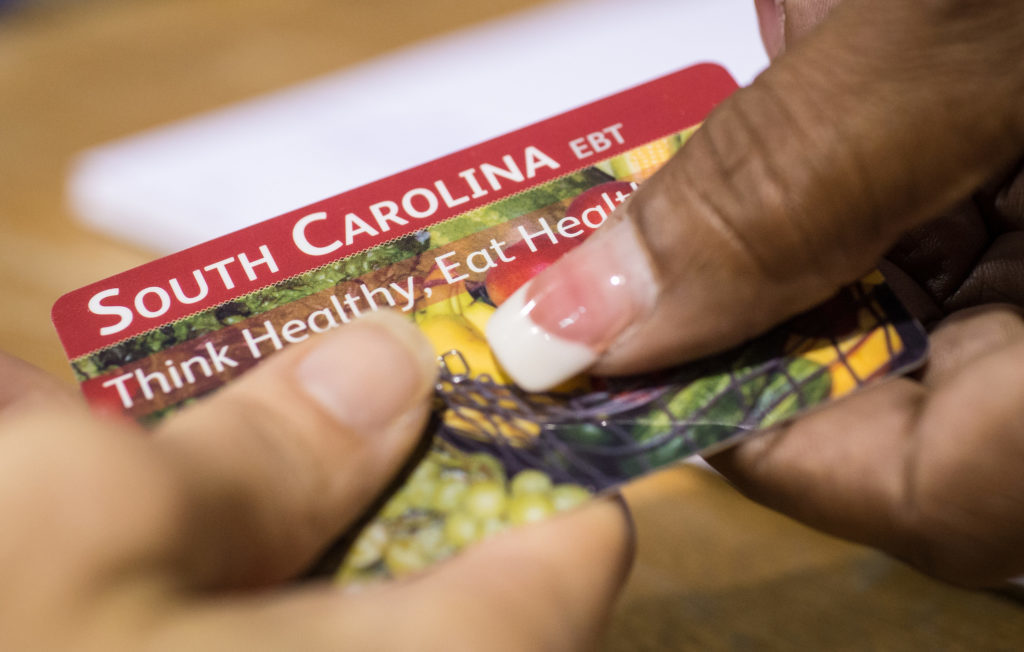If you read only the headlines from the past seven days, it’d be easy to assume the nation’s Supplemental Nutrition Assistance Program (SNAP, formerly food stamps) is headed for a significant downsizing. On Thursday, Reuters reported the Department of Homeland Security (DHS) is considering a set of rules that would take into account immigrants’ use of food aid in determining their eligibility for permanent residency.
Even though most legal non-citizens over the age of 18 are already ineligible for SNAP, these rules, if implemented, would further discourage families with children who are eligible for enrollment from signing up. Choose food assistance or HeadStart today, the logic goes, and risk your chance of gaining citizenship for your family in the future.
President Trump heightened the stakes on Monday when he released his budget proposing tightened eligibility requirements for SNAP, a move which would lower enrollment numbers by effectively booting people out of the program. (More controversially, the budget included a proposal to replace a portion of benefits with “harvest” boxes full of non-perishable foods.)
But a report released this month by the United States Department of Agriculture (USDA) Economic Research Service (ERS) shows that, despite 20 years of increasing local autonomy in administering the SNAP program, all 50 states have actually made it easier for people to receive their benefits.
It’s a bit of good news for a system with administrative shortcomings that have been exhaustively documented in the press: Just look at Rhode Island’s ongoing benefits backlog and the 40,000 Illinois families who temporarily lost their food stamps in December due to a glitch in a new computer system.
What they found was that, in general, “accommodative” SNAP policies—those that have a positive impact on enrollment numbers—have made a more significant difference than policies that negatively impact SNAP signups. Part of that is because of the 10 policies they chose, 7 were assigned to the positive, or +1, category. Just three of the 10 were assigned a negative score.
The policies that have nudged SNAP the furthest in a user-friendly direction are pretty much what you’d expect: Some states have stopped looking at applicants’ savings accounts and other assets, electing instead to consider only their monthly earnings. Others have increased SNAP income limits, meaning applicants can make a little more than the federal minimum wage and still be eligible for benefits. These kinds of policy innovations make a lot of sense when you consider the differences in minimum wage and cost of living throughout the country: Why should a New York City resident have the same income limit as someone living in the state of Kansas, where the cost of living is lower?
The other innovations in the study’s “+” category include the availability of online applications and a policy called “simplified reporting,” which reduces the number of times a household has to call the SNAP office if their financial circumstances change. The implementation of Electronic Benefits Transfer (EBT), where SNAP users receive their benefits on a magnetically encoded payment card every month, was found to lower the stigma associated with food stamps use and therefore improve enrollment. Federally funded radio or TV ads positively affected enrollment, but were discontinued in the early aughts.
The policies that negatively impacted SNAP enrollment included requiring households with working adults to get recertified every one to three months. The statistics show that the added burden of recertification depresses enrollment. Other barriers included fingerprinting and the eligibility restrictions for legal non-citizens implemented in the 1990s during welfare reform—a policy that, according to the Brookings Institution, decreased the use of benefits by people in that category by nearly 50 percent.
A policy’s “weight” is determined based on its impact on enrollment, so the heaviest policies are the ones that impact enrollment the most. The three highest-weighted policies were the also the three policies that negatively impacted enrollment: eligibility restrictions for non-citizens made the biggest difference, followed by short recertification periods and fingerprinting. The seven positive policies all weighed less than the least-impactful negative policy.
It’s important to note that total SNAP enrollment tracks more closely with the nation’s economy than it does with states’ individual policies. According to the Center on Budget and Policy Priorities, recent fluctuations in SNAP participation have more to do with the 2008 recession, the increase in participation that followed, and the expiration of certain Obama-era policies that made it temporarily easier for people to get SNAP benefits than any state’s decision to put the process on the internet.
Still, the index complicates the notion that handing states more autonomy in administering the SNAP program is either a good or bad thing. In some cases, it can lead to more efficient onboarding and more benefits for more people. In others, it can open the door for rules that discourage people from applying, like fingerprinting. What’ll be the impact of newly proposed rules, like Wisconsin Governor Scott Walker’s efforts to drug-test SNAP applicants? Only time will tell.











